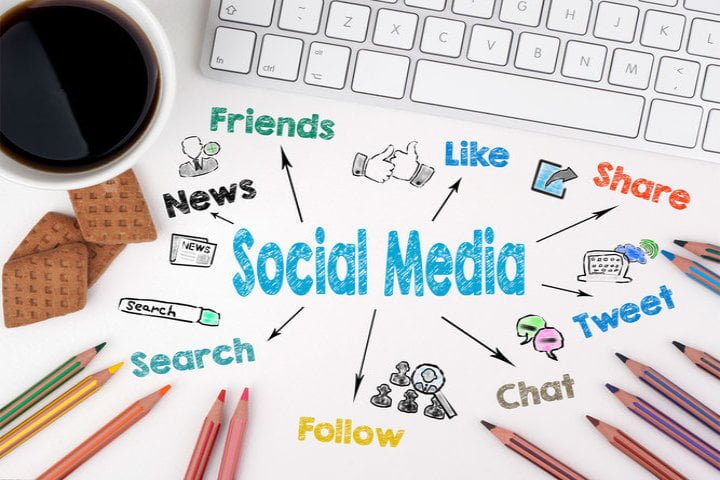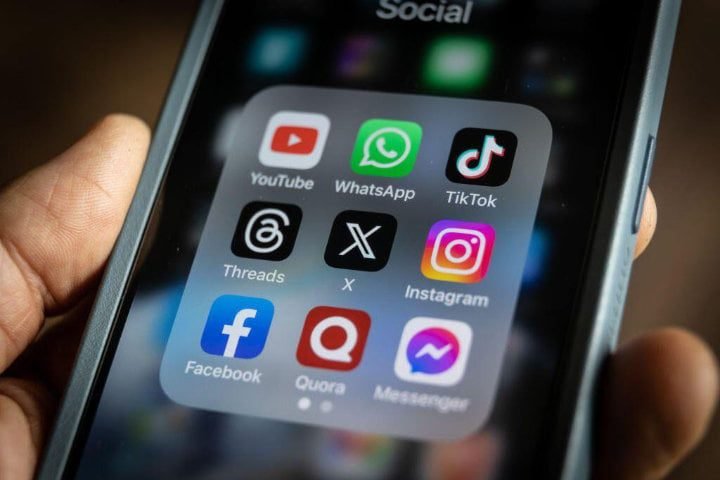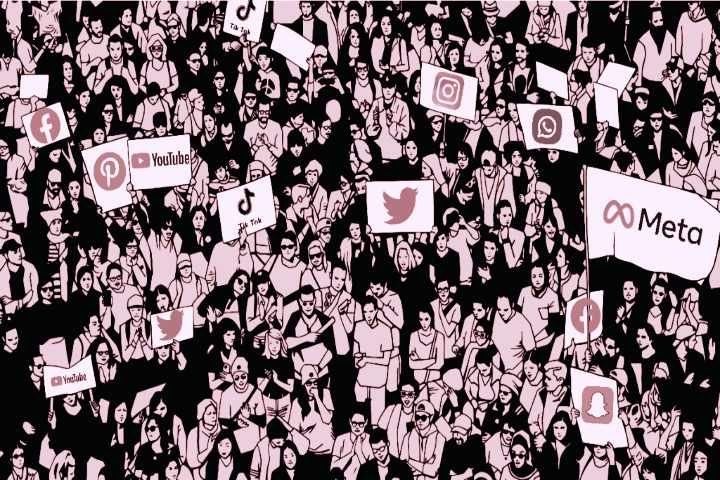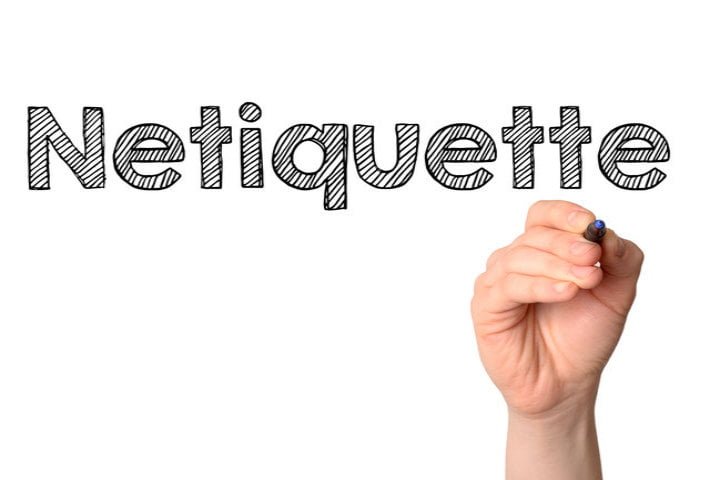CUET UG Social Media
In today’s digitally connected world, social media has become an integral part of our daily lives. From sharing life updates with friends to promoting businesses and sparking global movements, social media platforms have revolutionized the way we communicate, consume information, and interact with the world around us. This comprehensive guide will provide a thorough exploration of social media, covering its definition, types, platforms, impact, and more.
Social Media Definition

At its core, social media refers to internet-based platforms and technologies that allow users to create, share, and exchange content, ideas, and information in virtual communities and networks. These platforms facilitate social interaction, enabling users to connect with friends, family, colleagues, and even strangers across geographical boundaries.
The term “social media” encompasses a wide range of online platforms and activities, including:
- Social networking sites
- Messaging apps
- Content-sharing platforms
- Blogging and microblogging services
- Discussion forums
- Review and recommendation sites
Social media has transformed the way we communicate, blurring the lines between personal and professional, local and global, and public and private spheres of interaction.
Types of Social Media Platforms

The social media landscape is vast and diverse, catering to various user needs and preferences. Here are the main types of social media platforms:
- Social Networks: Platforms like Facebook and LinkedIn focus on connecting people and facilitating relationships.
- Media Sharing Networks: Instagram, YouTube, and TikTok allow users to share photos, videos, and other multimedia content.
- Microblogging Platforms: X (Twitter), Koo (closed in 2024), and Tumblr enable users to share short-form content and quick updates.
- Blogging Platforms: WordPress, Medium, and Blogger provide spaces for long-form content creation and sharing.
- Discussion Forums: Reddit and Quora foster community discussions and knowledge-sharing.
- Review and Recommendation Sites: Platforms like Yelp and TripAdvisor help users share opinions about businesses and services.
- Social Bookmarking Sites: Pinterest and Flipboard allow users to save and share interesting content they find online.
- Professional Networks: LinkedIn and Glassdoor cater to career-oriented networking and job searching.
- Anonymous Social Networks: Platforms like Whisper and Ask.fm allow users to share content anonymously.
- Interest-Based Networks: Goodreads for book lovers, IMDB for movie enthusiasts, and DeviantArt for artists are examples of niche social platforms.
Understanding these different types of social media can help individuals and businesses choose the most appropriate platforms for their goals and target audience.
Comparison of Social Media Platforms

This comprehensive comparison of social media platforms showcases the diverse landscape of digital social networking. Each platform caters to different user needs, content types, and demographics. Understanding these differences is important when creating effective social media strategies and choosing the right platforms for personal or business use.
| Platform | Primary Focus | Key Features | Monthly Active Users | Usages Context | Target Demographic |
| General social networking | News Feed, Groups, Marketplace, Events | 3.07+ billion | Widely used across age groups, it is popular for community-building | All age groups | |
| Visual content sharing | Stories, Reels, IGTV, Shopping | 2+ billion | Popular among younger users, influential in the fashion and lifestyle sectors | Millennials, Gen Z | |
| X (formerly Twitter) | Real-time updates and discussions | Tweets, Trending Topics, and lists | 330+ million | Widely used for news, politics, and celebrity updates | Adults, professionals |
| Professional networking | Job listings, Professional articles, and skill endorsements | 740+ million | Essential for job seekers and professionals, growing rapidly | Working professionals | |
| YouTube | Video sharing and streaming | Channels, Playlists, and live streaming | 2.5+ billion | Hugely popular for entertainment and educational content | All age groups |
| Instant messaging | Group chats, Voice/Video calls, Status updates | 2.8+ billion | The most widely used messaging app in India | All age groups | |
| TikTok | Short-form video content | Duets, Challenges, and Sound Library | 1.5+ billion | Banned in India but was hugely popular before the ban | Teens, young adults |
| Visual discovery and inspiration | Pins, Boards, and visual search | 498+ million | Growing user base, popular for lifestyle and DIY content | Adults, primarily women | |
| Snapchat | Ephemeral messaging and AR filters | Snaps, Stories, and Filters | 800+ million | Popular among urban youth | Teens, young adults |
| Interest-based communities | Subreddits, Upvoting system, AMAs | 1.2+ billion | Growing user base, popular for niche interests and discussions | Young adults, professionals | |
| ShareChat | Regional language social networking | Content in 15+ Indian languages | 180+ million | Caters to non-English speaking users, popular in tier 2 and 3 cities | Teens, young adults |
| Discord | Community-based communication and collaboration | Voice channels, text chat, community servers, integrations, private messaging, moderation tools | 500+ million | Popular for interest-based communities, online learning groups, gaming communities, and hobby clubs. Increasingly used by educators and creators for building private or semi-private engaged communities. | Teens, young adults, professionals with niche interests |
| Threads | Public conversations, short messages (microblogging) | Threaded posts, real-time conversations, visual and text content, connects seamlessly with Instagram network | 150+ million (rapidly growing since 2023 launch) | Used for real-time discussions, sharing opinions, building personal brands, and engaging audiences in trending topics. Appeals to users looking for an alternative to X (Twitter). | Young adults, creators, early adopters, Instagram users |
Key takeaways about social media platforms:
- The dominance of major players: Facebook, YouTube, and WhatsApp, leads in terms of monthly active users globally.
- Visual content trend: Platforms focusing on visual content (Instagram, TikTok, and Pinterest) are gaining popularity, especially among younger users.
- Niche platforms: LinkedIn (professional networking) and Reddit (interest-based communities) cater to specific user needs.
- Emerging markets: India’s social media landscape includes both global platforms and local alternatives catering to linguistic diversity.
- Feature convergence: Many platforms are adopting similar features (e.g., short-form videos and stories) to compete and retain users.
- Age demographics: Different platforms appeal to different age groups, with newer platforms generally attracting younger users.
When developing a social media strategy, consider:
- Your target audience and which platforms they prefer
- The type of content you want to share (text, images, videos)
- Your goals (brand awareness, community building, lead generation)
- Resources available for content creation and community management
By understanding the unique characteristics of each social media platform, individuals and businesses can make informed decisions about where and how to engage with their audience in the digital space.
Social Media Post Strategy

A social media post is any piece of content shared on a social media platform. This can include text, images, videos, links, or a combination of these elements. The key to a successful social media post lies in its ability to engage the audience and encourage interaction.
This table provides a detailed strategy for creating effective social media posts across various platforms, tailored to each platform’s unique features and audience expectations.
| Platform | Post Types | Best Practices | Optimal Timing | Hashtag Usage | Engagement Tips for Indian Users |
| Text, Images, Videos, Links, and Live Videos | Use high-quality visuals Keep the text concise Share a mix of original and curated content Use Facebook Stories for timely content | 1-3 posts per day Best times: 1-4 PM Weekdays perform better | Use 1-2 relevant hashtags Create branded hashtags for campaigns | Ask questions Run contests Use polls Respond to comments Share content in regional languages Leverage festival-themed posts Use Facebook Groups for community building | |
| Photos, Videos, Stories, Reels, and IGTV | Use high-quality, visually appealing images Experiment with various formats (e.g., carousel posts) Use Instagram Stories for behind-the-scenes content Create engaging Reels | 1-2 posts per day Best times: 11 AM–2 PM, 7-9 PM Monday to Friday | Use 5–9 relevant hashtags Mix popular and niche hashtags Create branded hashtags | Use Instagram Stories stickers (polls, questions) Encourage user-generated content Showcase Indian aesthetics in visuals Use regional language captions Highlight local influencers | |
| X (Twitter) | Text (280 characters), Images, Videos, Polls | Be concise and to the point Use strong headlines Share breaking news and real-time updates Engage in trending conversations | 3-5 tweets per day Best times: 8 AM–4 PM Weekdays perform better | Use 1-2 relevant hashtags Participate in trending hashtags Create branded hashtags for campaigns | Retweet and comment on relevant content Host Twitter chats Use polls for quick engagement Tweet in multiple Indian languages Engage with local trending topics Live-tweet during major Indian events |
| Text, Images, Documents, Articles, and Videos | Share industry insights and professional content Use data and statistics Write long-form articles Share company updates and job openings | 1-2 posts per day Best times: 8-10 AM, 12 PM, 6-7 PM Tuesday to Thursday | Use 3–5 relevant professional hashtags Create industry-specific hashtags | Share thought leadership content Encourage employees to engage Participate in LinkedIn groups Highlight Indian business success stories Share insights on the Indian job market Network with Indian professionals | |
| YouTube | Videos, Shorts, and Live Streams | Create high-quality, valuable video content Optimize video titles and descriptions Use eye-catching thumbnails Experiment with YouTube Shorts | 1-3 videos per week Best times: 2-4 PM, 7-10 PM Thursday to Sunday | Use relevant hashtags in video descriptions Create series-specific hashtags | Respond to comments Use end screens and cards Collaborate with other creators Create content in regional languages Showcase Indian culture and traditions Address topics relevant to the Indian audience |
| Text, Images, Videos, Voice Messages, and Status Updates | Use WhatsApp Business for professional communication Create broadcast lists for updates Use status updates for timely content | Limit broadcasts to 1-2 per week Respect users’ privacy and time | N/A | Use WhatsApp Groups for community building Encourage two-way communication Use WhatsApp for customer service Share multilingual content Use WhatsApp for local business promotions Share festival greetings and wishes | |
| Images, Infographics, Videos, and Product Pins | Use high-quality, vertical images (2:3 ratio) Create informative, actionable pins Use text overlays on images Organize content into themed boards | 3-5 pins per day Best times: 2-4 PM, 8-11 PM Saturday performs best | Use relevant keywords in pin descriptions | Create multiple pins for the same content Join group boards Encourage repins Share Indian recipes and DIY projects Showcase Indian fashion and design Create boards for Indian festivals and traditions |
General Tips for Creating Effective Social Media Posts:

Here are some tips for creating effective social media posts:
- Know your audience: Tailor your content to the interests and preferences of your target audience.
- Use visuals: Posts with images or videos tend to get more engagement than text-only posts.
- Keep it concise: Attention spans are short on social media, so make your point quickly and clearly.
- Use hashtags: Relevant hashtags can increase the visibility of your posts and help you reach a wider audience.
- Encourage interaction: Ask questions, run polls, or include calls to action to encourage engagement.
- Be authentic: Genuine, relatable content often performs better than overly promotional material.
- Timing matters: Post when your audience is most likely to be online and engaged.
- Maintain consistency: Regular posting helps keep your audience engaged and grows your following.
Additional Considerations in Post-Creation:
- Multilingual approach: Create content in multiple Indian languages to reach a wider audience.
- Mobile optimization: Ensure all content is easily viewable on mobile devices.
- Cultural sensitivity: Be aware of and respectful of India’s diverse cultural and religious sensitivities.
- Festive calendar: Incorporate major Indian festivals and events into your content calendar.
- Local trends: Stay attuned to and engage with trends and topics relevant to the Indian audience.
By following these platform-specific strategies and general best practices, one can create engaging social media posts that resonate with the audience and achieve their social media goals. Remember to consistently review and adjust your strategy based on performance metrics and changing platform algorithms.
Social Media Impact
The impact of social media on society and individuals is profound and multifaceted. Its overall impact may further be divided into ‘social media advantages’ and ‘social media disadvantages.’
Social Media Advantages

The importance of social media in today’s world cannot be overstated. Here’s why it has become so crucial:
Global Connectivity: Social media has transformed how we communicate, favoring brevity, visual content, and instant responses. It facilitates instant communication across distances, breaking down geographical barriers. It allows people to connect with friends, family, and like-minded individuals across the world. It can promote supportive communities around shared interests or challenges.
Information Consumption: Social media provides instant access to a vast array of information and news, often outpacing traditional media outlets. It has changed how we consume and share information, sometimes leading to information overload or the spread of misinformation. During natural disasters, social media has proven invaluable for coordinating relief efforts and disseminating crucial information.
Creative Expression: Platforms like Instagram and TikTok provide outlets for creativity and self-expression. Social media provides a constant stream of entertainment, from funny videos to engaging stories.
Social Movements: Social media amplifies voices by advocating for social causes and raising awareness about important issues. Platforms like Twitter have been instrumental in organizing and amplifying social movements, from #MeToo to climate change activism. Campaigns against social issues like corruption and violence against women have gained momentum through social media.
Political Landscape: Social media has become a powerful tool for political campaigns, sometimes spreading propaganda or polarization.
Business Models: It offers cost-effective marketing and networking opportunities for businesses of all sizes. It has given rise to new business models, including influencer marketing and social commerce. LinkedIn and other professional networks enhance career opportunities and industry connections. Small businesses and artisans in India have found new markets through social media platforms.
Education: Social media has opened up new avenues for learning, from educational YouTube channels to collaborative online study groups. Many educational resources and learning communities thrive on social media platforms.
Cultural Exchange: It has facilitated greater cultural exchange and understanding, exposing users to diverse perspectives and lifestyles.
Digital Empowerment: Social media has given a voice to marginalized communities and individuals who may not have access to traditional media. It has also helped bridge the digital divide, bringing many first-time internet users online.
Consumer Behavior: Social media influences purchasing decisions, with many buyers relying on social proof and influencer recommendations. Businesses can directly engage with customers, gathering feedback and providing support.
Social Media Disadvantages

While social media offers many benefits, it’s important to be aware of its potential drawbacks:
Mental Health: While social media can encourage connections, it has also been linked to issues like anxiety, depression, and FOMO (fear of missing out). Researchers have found that using social media too much can lead to behavior that is similar to addiction and mental health problems. Constant exposure to curated highlight reels of others’ lives can lead to unhealthy comparisons and low self-esteem.
Privacy Concerns: Digital footprints, which are information shared on social media, can have long-lasting implications for personal and professional life. The vast amount of personal data shared on social media has raised significant privacy and data security concerns. High-profile data breaches have highlighted the vulnerability of personal information shared on social platforms.
Attention Deficit: Social media’s addictive nature has raised concerns about its impact on productivity and attention spans. Social media can be a significant distraction, potentially impacting work or academic performance. There are also concerns that social media may be replacing real-world, face-to-face interactions.
Cyberbullying and Harassment: The anonymity of the internet can lead to increased instances of online bullying and harassment.
Misinformation and Fake News: Social media can facilitate the rapid spread of misinformation and fake news. Algorithm-driven content can create echo chambers, reinforcing existing beliefs and limiting exposure to diverse viewpoints.
The Future of Social Media: Trends and Predictions

As we look ahead, several trends are shaping the future of social media:
- Augmented Reality (AR) Integration: Platforms are increasingly incorporating AR features, from filters to interactive ads.
- Rise of Social Commerce: Social media platforms are evolving into direct shopping channels, merging the boundaries between social networking and e-commerce.
- Emphasis on Privacy: With growing concerns about data privacy, platforms are likely to introduce more robust privacy features and transparent data practices.
- Short-Form Video Dominance: Following the success of TikTok, short-form video content is becoming increasingly popular across platforms.
- AI and Personalization: Artificial Intelligence will play a bigger role in content curation and personalized user experiences.
- Virtual and Augmented Reality Spaces: The concept of “metaverse” is gaining traction, potentially transforming how we interact on social media.
- Niche Platforms: We may see a rise in platforms catering to specific interests or demographics.
- Authenticity and Transparency: Users are increasingly valuing authentic, “unfiltered” content over highly curated posts.
- Social Listening for Brands: Businesses will increasingly use social media data for market research and customer insights.
- Integration of Messaging and Social Features: The line between messaging apps and social networks may continue to blur.
In India, we might see:
- Vernacular Content Growth: An increase in content and platforms catering to India’s diverse languages.
- Rural India Adoption: As internet penetration increases, social media usage in rural India is likely to grow significantly.
- Social Media for Governance: Increased use of social media by government bodies for citizen engagement and service delivery.
Conclusion
Social media has undeniably transformed the way we communicate, consume information, and interact with the world around us. Its impact spans personal relationships, business operations, political landscapes, and social movements. While it offers unprecedented opportunities for connection and expression, it also presents challenges that require thoughtful navigation.
As we continue to evolve in this digital age, it’s crucial to approach social media with intention and awareness. By understanding its various forms, leveraging its benefits, and being mindful of its pitfalls, we can harness the power of social media to enrich our lives and communities.
It is important to remember that, at its core, social media is about human connection. By focusing on authentic interactions, valuable content, and responsible usage, we can contribute to a positive and enriching social media environment for all.
Frequently Asked Questions (FAQs)
Q1. What is the largest social media platform in India?
A1. WhatsApp is the largest social media platform in India with over 500 million users, followed by Facebook and YouTube.
Q2. Which social media platform is best for businesses in India?
A2. Facebook and Instagram remain top choices for businesses due to their large audiences and advanced advertising tools. LinkedIn is ideal for B2B and professional services.
Q3. How often should I post on social media for best engagement?
A3. Posting 3–5 times per week is optimal for most platforms, but regular engagement (responses, stories, reels) boosts visibility and follower loyalty.
Q4. Which platform is best for educational content?
A4. YouTube is highly effective for educational videos. Instagram Reels and Facebook Groups are also popular for microlearning and discussion.
Q5. How can I keep my social media account secure?
A5. Use strong passwords, enable 2-factor authentication, be cautious with third-party apps, and regularly monitor account activity.
Q6. What new trends are shaping social media?
A6. AI-powered content recommendations, short-form video dominance, regional language content growth, and social commerce are major trends.
Q7. What are the risks of social media usage?
A7. Main risks include privacy breaches, cyberbullying, misinformation, and addiction. Users should set privacy controls and limit screen time.
Q8. Which new or emerging platforms should I watch?
A8. Discord, Threads, and ShareChat are growing rapidly in India and globally, offering new features for community and niche content.
The CUET UG Mass Communication syllabus contains this topic under the Social Media section.




